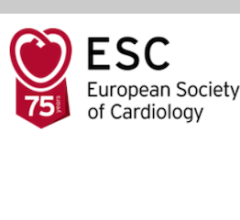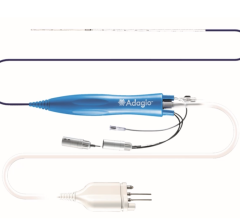
Getty Images
August 29, 2023 — Optical coherence tomography (OCT) is non-inferior to intravascular ultrasound (IVUS) for guiding percutaneous coronary intervention (PCI), according to late breaking research presented in a Hot Line session at ESC Congress 2023.1
IVUS and OCT have been increasingly used to guide PCI procedures. Both imaging techniques can be used to assess target lesion characteristics, optimize stent implantation and minimize stent-related problems. European and US guidelines recommend that IVUS or OCT be considered in selected patients to optimize stent implantation.2,3 However, the comparative effectiveness of these two contemporary imaging strategies for PCI guidance are still unknown.
The OCTIVUS trial was a head-to-head comparison of OCT- and IVUS-guided PCI with regards to clinical outcomes in patients with a broad range of coronary artery lesions.
The trial was an investigator-initiated, prospective, multicenter, randomized, open-label pragmatic trial conducted at nine sites in South Korea. It enrolled patients aged 19 years or older who were undergoing PCI with contemporary drug-eluting stents or drug-coated balloons (only for in-stent restenosis) for significant coronary artery lesions. As a pragmatic trial, the enrolment criteria were designed to capture a broad range of patients with various anatomical or clinical characteristics.
A total of 2,008 patients were randomized in a 1:1 ratio to undergo either OCT-guided or IVUS-guided PCI after diagnostic coronary angiography. The average age of participants was 64.7 years and 21.6% were women. Overall, 33.4% of patients had diabetes, 76.6% presented with stable ischemic heart disease and 23.4% presented with an acute coronary syndrome.
The primary endpoint was a composite of death from cardiac causes, target vessel myocardial infarction or ischemia-driven target vessel revascularization at one year, which was powered for noninferiority of the OCT group as compared with the IVUS group (noninferiority margin, 3.1 percentage points).
At one year after randomization, the primary endpoint had occurred in 25 of 1,005 patients (2.5%) in the OCT-guided PCI group and in 31 of 1,003 patients (3.1%) in the IVUS-guided PCI group (risk difference, −0.6 percentage points; upper boundary of the one-sided 97.5% confidence interval, 0.97; p<0.001 for noninferiority).
Regarding safety endpoints, the incidence of contrast-induced nephropathy was similar in the OCT and IVUS groups (1.4% vs. 1.5%, respectively). The incidence of major procedural complications was lower in the OCT group compared with the IVUS group (2.2% vs. 3.7%; p=0.048).
The total amount of contrast used was higher in the OCT group compared with the IVUS group (average of 238.3 vs. 199.8 mL; p<0.001), but the total PCI time was shorter in the OCT group (mean 46.1 vs. 48.9 minutes; p<0.001).
Principal investigator Professor Duk-Woo Park of Asan Medical Center, Seoul, Republic of Korea said: “Among patients undergoing PCI for diverse coronary artery lesions, OCT-guided PCI was noninferior to IVUS-guided PCI with respect to a composite of death from cardiac causes, target vessel myocardial infarction, or ischemia-driven target vessel revascularization at 12 months after the index procedure. The primary results of OCTIVUS add compelling evidence on the relative efficacy and safety of an OCT-guided strategy compared with an IVUS-guided strategy for PCI.”
For more information: www.escardio.org
Find more ESC23 conference coverage here
References and notes
- OCTIVUS will be discussed during Hot Line 4 on Sunday 27 August at 08:30 to 10:00 CEST in room Amsterdam.
- Neumann FJ, Sousa-Uva M, Ahlsson A, et al. 2018 ESC/EACTS Guidelines on myocardial revascularization. Eur Heart J. 2019;40:87-165.
- 3. Lawton JS, Tamis-Holland JE, Bangalore S, et al. 2021 ACC/AHA/SCAI Guideline for coronary artery revascularization: A report of the American College of Cardiology/American Heart Association Joint Committee on Clinical Practice Guidelines. Circulation. 2022;145:e18-e114.


 August 29, 2025
August 29, 2025 









